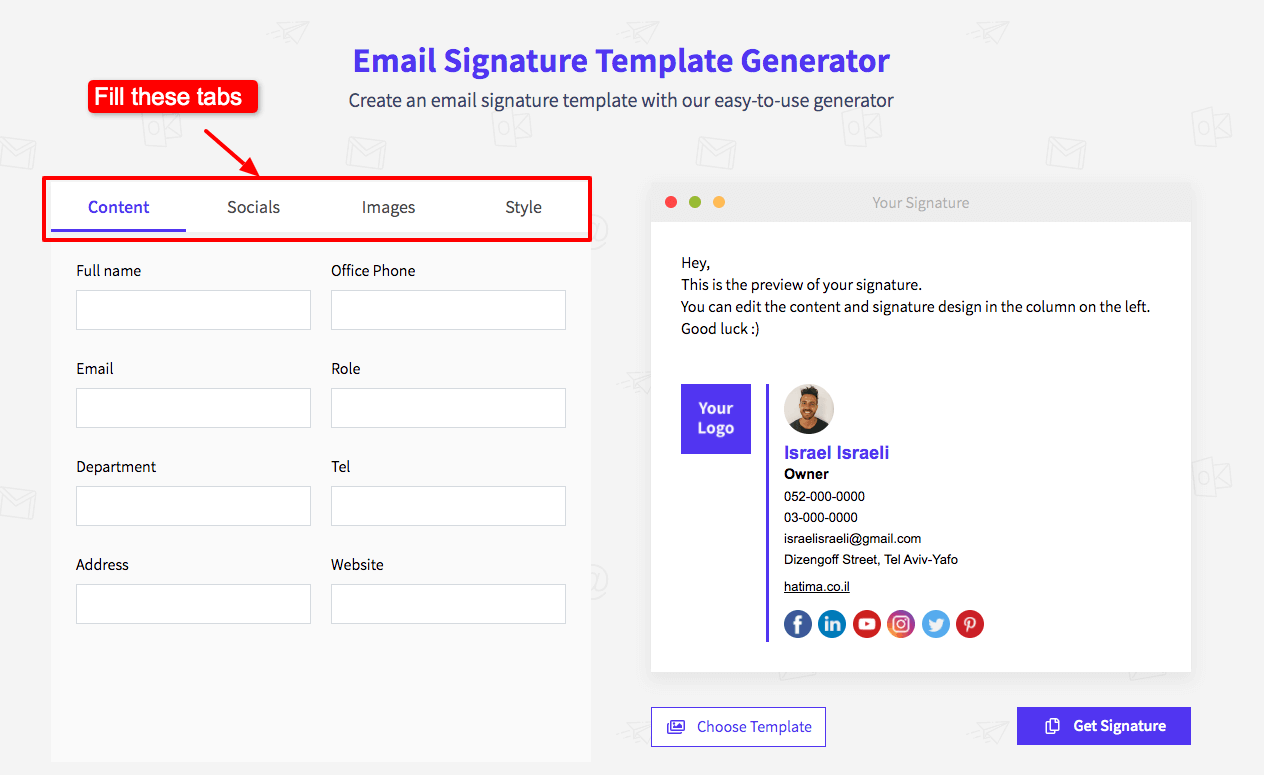
Other people don’t want the limitations of email clients put on them and opt to design their email signature as one complete image. I have put dozens of hours into trying to figure out the best combination of HTML attributes and CSS tags to make things appear in the most consistent way across email clients, those tools aren’t trying to do that! The other thing is that these tools don’t export their code in a signature friendly way. Often these tools break images because they are publicly accessible. Images need to be uploaded to a web server for viewers of your signature to download. The first thing to watch out for is images. This may partially work for some simple formatting like bold and choosing colors, but can cause unforeseen issues if you aren’t careful. Some people prefer to use a tool they already know, like Word, Google Docs or Excel, or some other kind of desktop editor. Use a Desktop Publishing Tool like Word:.

Many of them have templates you can start off with to give you an idea of what should be included. They don’t require too much technical knowledge and will guide you through the process of making the signature. They are generally easy to use, add your personal information into, and export your signature to your email client. Online tools like these are the quickest and easiest way to make something professional without taking too much time. I may be biased, but my recommendation is to use an email signature generator, like signature.email. If you are an individual it shows that you are serious about yourself or your cause and that the recipient can expect that in their interactions with you. If you have a company email signature it shows that you are a representative of a larger organization and allows the organization to back you up in some respects. While some may prefer the simplicity of just their name at the end of an email, there is something about a more developed email signature that shows professionalism and asks for respect. It represents you, so you want to make sure you put in the effort to a good first impression with it. A recipient can quickly scan the colors, fonts, images and messages in an email signature and convey more about you in a second than what would take minutes of conversation to tell someone. But your email signature also is a representation of your brand (personal or company wide). It serves many of the same purposes, like providing contact information for the recipient that may need it the next time they need to call you or drive to your office.



What is the purpose of an email signature?Īn email signature is like a business card. It doesn't have to literally be your handwritten signature, but rather it can be your name, title and other pieces of information that represent you, as your handwritten signature does. An email signature is something that can appear at the bottom of every email you send out.


 0 kommentar(er)
0 kommentar(er)
